Watershed Approach
April 23, 2024 2024-08-26 20:56Watershed Approach
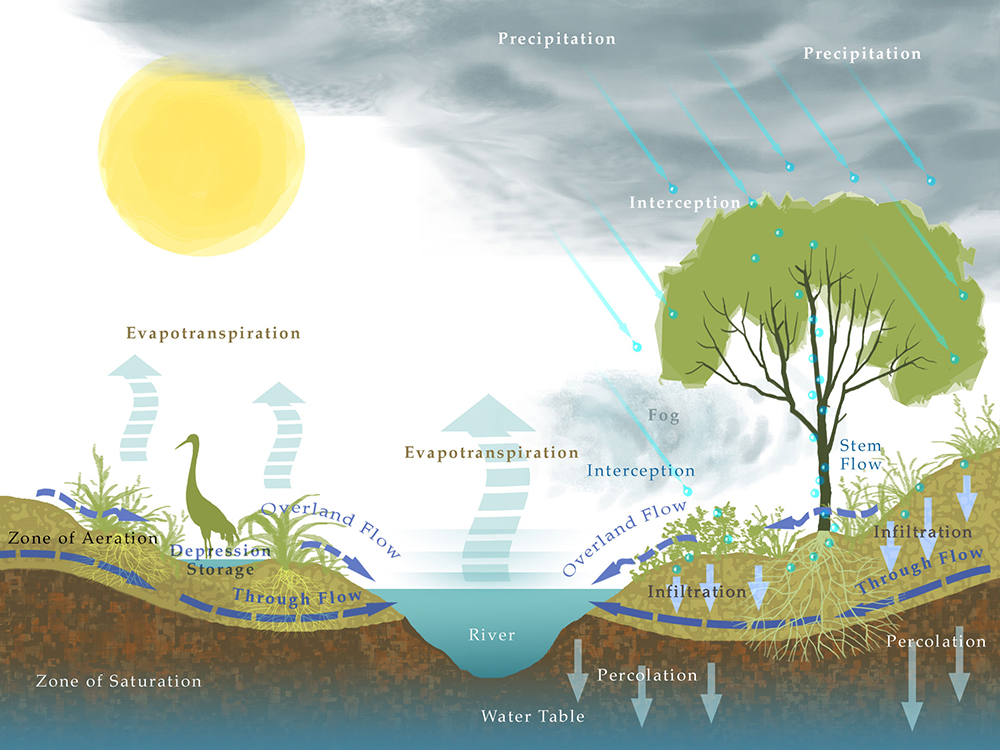
What is the Watershed Approach to Landscaping?
Your front yard is where you meet the global environment. Design, install, and manage your landscape using the Watershed Approach. The result is a gorgeous living space that functions as a healthy mini-watershed: sequestering atmospheric carbon, preventing water and air pollution, restoring the hydration and life of the soil, and attracting essential life into the garden. Making your landscape Watershed Wise is no more expensive or difficult than making any landscape; it just takes a little know-how and practice.
- Build Healthy Living Soil
- Capture Rainwater As A Resource
- Select Local, Climate-Appropriate Plants
- Use Highly Efficient Irrigation Only When Necessary
What Does “Watershed Approach” Really Mean?

In a healthy balanced watershed, rainwater passes through plants and healthy living soil, before moving into our local waterways or going back into the sky to form clouds. Plants and soil make a huge sponge and filter for water; this keeps our earth green and water abundant.

These are the four key elements of the Watershed Approach to landscaping – that is, making every landscape a healthy balanced watershed, regardless of size or location.

Every single property (residential, commercial, public, large or small) can be treated like a mini-watershed. That means every landscape can be restored or designed, built and managed using the four principles of the Watershed Approach.
Step 1 – Build Healthy Living Soil

Soil is Alive! Let’s keep it that way by nurturing the billions of microbes, fungi and macroarthropods that create spongey soil and cycle nutrients for plants.

Our landscape, building and agriculture practices have killed the soil. Without healthy living soil, our landscapes will NEVER be healthy watersheds. We need to build up the carbon in our soil before we do anything else in our gardens.
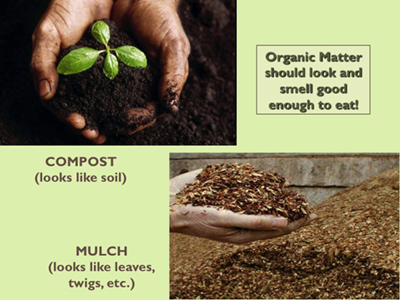
Add organic matter in the form of good compost or worm castings to the soil AND mulch heavily (no less than 2″, and in dry climates, 4″) with mixed leaf and wood mulch, or keep leaves from existing plants in place. This “organic pizza” keeps the Soil Party going strong.
Step 2 – Capture Rainwater As a Resource

Every hard surface, like your roof, generates valuable rainwater for your landscape. A 1,000 sq. ft. roof gives you 620 gallons of water for every 1 inch of rain!

Living Soil creates far more storage capacity than any cistern or barrel ever could, though barrels are good for slowing down the water so it can be captured in the landscape.

Every landscape should be contoured to receive the rainwater. That means NO FLAT YARDS!
Step 3 – Select Local Climate Appropriate Plants

Climate appropriate plants are adapted to the specific conditions where you live. The best plants are natives that have evolved with the soils, topography, climate, birds, and insects of your place. In dry places, select plants that require the least amount of supplemental water.

Aesthetics and beauty are not sacrificed when we select climate appropriate plants.
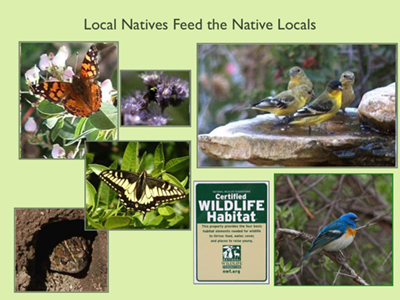
Local native plants also attract wildlife to your garden. If you want butterflies and birds, you’ve got to put the local natives in your landscape.
Step 4 – Use Highly Efficient Irrigation Only When Necessary

Highly efficient irrigation such as drip or rotating sprinkler nozzles is used ONLY when absolutely necessary to provide supplemental water (more than rain).
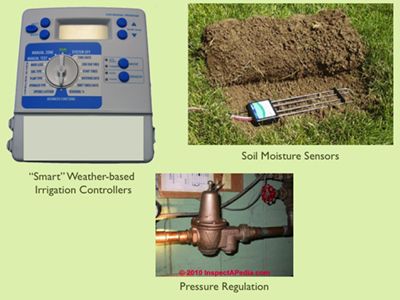
Control devices such as “smart” irrigation controllers or soil moisture sensors that use climate and soil moisture data to change days and run times for irrigation systems, and pressure regulation that reduces the system’s incoming water pressure to ensure optimal performance, are a few key components of efficient irrigation.
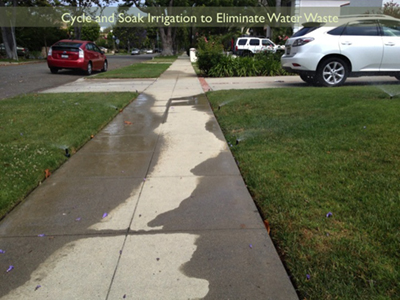
Human system management is a key component to irrigation efficiency. Reduce water waste (dry weather runoff and overspray) by observing when water runs off the property and adjusting the irrigation controller to cycle multiple short run times with 30 – 60 minute soak times between. This is critical in heavy clay soil or sloped yards.
Cha, Cha, Cha – Pay Attention to Your Parkway Too!
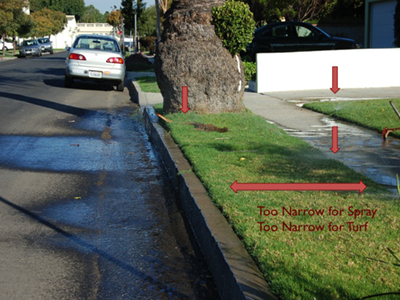
Parkways (areas between sidewalks and street) are an excellent place to practice the Watershed Approach because they are often turf-covered with irrigation that oversprays and wastes water.
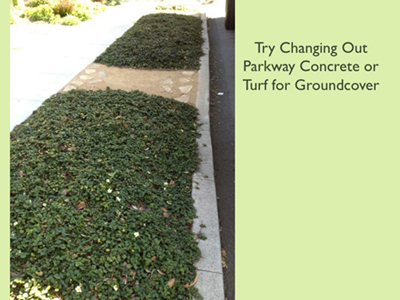
Turf grass can be replaced with evergreen and low water requiring walkable groundcover, like this Fragaria chilosensis (Beach strawberry.)

Think outside of the curb! Curbs can be cut to allow water into the parkway area, slowing it down, spreading it out, and sponging it for the benefit of any trees or plants.

